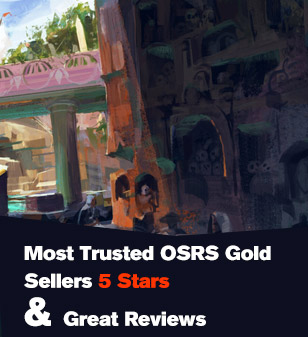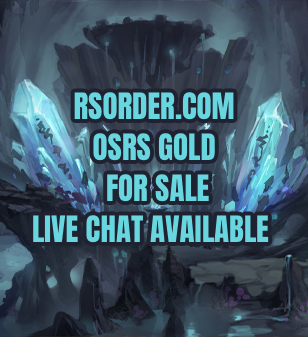Top News
-
Diablo 4 Season 10 Druid Guide: How to Level Fast with Pulverize
Oct-02-2025 PST / Diablo4 -
Lineage 2M Mage Build Guide: Free-to-Play Friendly Setup
Sep-30-2025 PST / Lineage 2M -
Learn Effective Attacking Skills in EA FC 26
Sep-30-2025 PST / FC 26 -
Path of Exile 2:Top Chronomancer Build Guide (Patch 0.3.0)
Sep-30-2025 PST / POE 2
Path of Exile 2: How to Craft Gear
In the world of Path of Exile 2 (PoE 2), crafting plays a pivotal role in defining your character's power and performance. Unlike many other action RPGs, where gear progression is largely based on luck and drops, PoE 2 introduces a deep, complex crafting system that allows players to create their own powerful gear and even modify existing items. Crafting gear in PoE 2 isn't just about making something better—it's about tailoring your equipment to suit your specific build, making every piece of gear a personalized part of your character's journey.
This article will guide you through the basics of crafting gear in Path of Exile 2, explain the key crafting mechanics, and provide tips for maximizing the effectiveness of your crafted items.
The Basics of Crafting in Path of Exile 2
Before diving into the specifics, it's important to understand how PoE 2's crafting system works at its core. Crafting in PoE 2 revolves around a few main elements:
Base Items: All crafting starts with a base item. These are items with a specific type and set of affixes (modifiers) already attached to them. They can be weapons, armor, jewelry, or other unique equipment. The base item determines the item's potential stats and the kind of mods it can acquire.
Affixes: Items in PoE 2 can have two types of modifiers:
Prefix Mods: These typically provide basic stats like increased damage, resistance, or life.
Suffix Mods: These are often more specialized, granting bonuses like movement speed, life regeneration, or specific elemental damage bonuses.
Currency Orbs: Unlike traditional crafting systems, PoE 2 uses a variety of orbs, each with a different function. These orbs can reroll affixes, improve the quality of an item, or even add new modifiers entirely. Understanding how each orb works is crucial for successful crafting.
Crafting Bench: This is an essential tool for more advanced crafting. Located in your hideout or town, the crafting bench allows you to add specific mods, alter existing affixes, or further refine your gear.
Essences, Fossils, and Fractured Items: These are more advanced crafting materials that modify the crafting process. They allow you to influence the outcome more precisely or even create powerful, endgame-ready gear.
How to Craft Gear: Step-by-Step Guide
Now that you understand the key concepts, let's dive into the step-by-step process of crafting gear in PoE 2.
Step 1: Selecting a Base Item
The first step in crafting is selecting a base item. This item will determine the potential of your final crafted gear. When selecting a base, consider the following:
Item Type: Some items are better suited for certain builds. For example, a two-handed sword is ideal for a melee build, while wand or staff bases are better for spellcasters.
Base Modifiers: Every base item comes with specific potential modifiers. For example, a Darkwood Bow base might have higher attack speed and damage potential, while a Gravicius Plate might give you high base armor for tanky builds. Choose your base carefully to match your needs.
Once you've picked a base item, it's time to decide if you want to craft it from scratch or modify an existing piece of gear.
Step 2: Using Orbs to Roll Mods
The core of crafting gear in PoE 2 involves using Currency Orbs to alter the affixes of an item. These POE 2 Orbs are your primary tool for crafting, and each one serves a different function.
Here's how you can use them:
Orb of Transmutation: This orb turns a normal (white) item into a magical (blue) item with one or two random modifiers. It's a starting point for most crafting processes.
Orb of Alchemy: This orb turns a magical (blue) item into a rare (yellow) item with three random modifiers. It's often used to upgrade an item once you have a decent base.
Orb of Scouring: This orb removes all affixes from an item, turning it back to a normal state (white item). It's useful when you want to start fresh.
Orb of Augmentation: This orb adds a random modifier to an already magical (blue) item, allowing you to add a new prefix or suffix.
Orb of Exaltation: This orb adds a new random modifier to a rare (yellow) item. It's commonly used when you want to improve an item that already has decent affixes but could use one more.
Once you have your base item, you can apply these orbs and reroll your modifiers until you get something that suits your needs. The process can take time, but persistence is key.
Step 3: Crafting with the Bench
After using orbs to roll random modifiers on your base item, you can further refine it with the Crafting Bench. This bench is an invaluable tool for high-level crafting, and it allows you to do things like:
Add Specific Mods: You can use the bench to add a specific prefix or suffix modifier to your gear. For example, you could add a mod like "Increased Maximum Life" to a piece of armor.
Enhance Modifiers: Some crafting options let you enhance existing mods. For instance, you might be able to increase the potency of a damage boost or make your life modifier more powerful.
Remove Modifiers: You can also use the crafting bench to remove unwanted mods, which is helpful if you want to clear space for new ones.
The bench also offers advanced options like unlocking the ability to craft specific mods, such as "Chance to Ignite" on weapons or "Increased Armor" on armor.
Step 4: Using Essences, Fossils, and Other Special Materials
If you want to get more specific with your crafting, PoE 2 offers advanced materials like Essences and Fossils. These items allow you to tailor the crafting process more precisely and create highly specialized gear.
Essences: Essences are powerful crafting materials that allow you to add a guaranteed modifier to an item. For instance, using an Essence of Rage on an item will guarantee an increase in attack damage, often with additional related stats. Essences can also be combined with other orbs for even more complex crafting.
Fossils: Fossils are rare crafting materials that affect the outcome of crafting by altering the types of mods that can appear. For example, a Shuddering Fossil could add more energy shield-related modifiers to your gear, while a Prismatic Fossil could add elemental modifiers. Fossils work by limiting or enhancing specific affix pools, allowing you to fine-tune your gear even further.
Fractured Items: Some items come with "fractured" mods, meaning that one of their mods is pre-set and cannot be changed. These items are useful for crafting because they provide a guaranteed stat. However, you must be careful, as you cannot remove or alter the fractured mod.
These advanced crafting materials open up a world of possibilities for customizing your gear, whether you're aiming for a very specific damage type, survivability stat, or niche modifier.
Step 5: Finishing Touches – Crafting High-Level Gear
Once you've rolled and refined your gear with orbs, crafting benches, and special materials, the final step is to perfect your item for endgame use. This is where careful planning and knowledge of your build become crucial.
Here's what to keep in mind:
Resistances: Make sure your armor pieces have the appropriate elemental resistances (fire, cold, lightning) to survive tougher areas. You can use the Crafting Bench to add resistances if needed.
Stat Synergy: Crafting in PoE 2 is all about synergizing with your build. If you're a spellcaster, prioritize stats like +% spell damage, energy shield, and mana regen. If you're a melee character, look for attack speed, critical strike chance, and life.
High-Value Mods: Focus on high-value modifiers like increased physical damage, elemental damage, critical strike chance, or life. These mods are generally very powerful and will make a huge difference to your overall performance.
As your character progresses through PoE 2's endgame content, you'll likely need to craft specialized gear that boosts your damage, survivability, or utility for specific encounters. Keep experimenting with different combinations of orbs, essences, and fossils to fine-tune your gear and stay ahead of tougher challenges. When you need resources, you can get them through Poe2 trade.
Conclusion
Crafting gear in Path of Exile 2 is a rewarding and intricate system that offers vast customization for every build. Whether you're upgrading basic gear or creating high-level, specialized equipment, the crafting mechanics allow you to push your character's potential to the limit. By understanding the core systems—base items, affixes, orbs, crafting benches, and advanced materials—you can tailor your gear to suit your exact needs.
With a little patience, some trial and error, and a clear focus on your build's goals, you'll soon be crafting gear that turns you into a force to be reckoned with in PoE 2. Happy crafting, Exile!
Recently read
-
Diablo 4 Season 10 Druid Guide: How to Level Fast with Pulverize
Oct-02-2025 PST / Diablo4 -
Lineage 2M Mage Build Guide: Free-to-Play Friendly Setup
Sep-30-2025 PST / Lineage 2M -
Learn Effective Attacking Skills in EA FC 26
Sep-30-2025 PST / FC 26 -
Path of Exile 2:Top Chronomancer Build Guide (Patch 0.3.0)
Sep-30-2025 PST / POE 2


